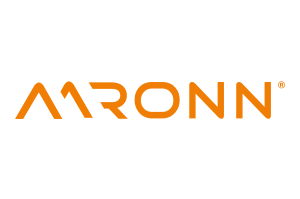Radar, lidar, camera
I can see what you can’t see
Fortsetzung des Artikels von Teil 1
Cameras — developments continue

But SiGe is by far not the only technology; many IC producers, including Infineon, are working on a CMOS-based radar chip. Nevertheless, Borghetti is convinced that SiGe is not yet at the end of the road. The way he sees it, both technologies, SiGe and CMOS, will exist side by side for at least the next ten years in radar applications. His reasons: “While SiGe continues to be attractive for applications with the highest performance demands, CMOS contributes advantages where integration plays an important role. The different applications in radar call for different technologies and flexibility. Today we see no cost benefit in CMOS but that could change in future — CMOS matures in radar.”
TI’s Ramaiah on the other hand is an absolute advocate of CMOS technology. The first 77-GHz SiGe transceivers from the year 2009 were multi-chip solutions in which one board for RF and another for baseband were combined. “The typical result of something like that is negative where system costs are concerned”, he says. CMOS technology enables integration of the different functions, he argues, plus new features, and “for comparable RF power as with SiGe.” CMOS radar sensors also offer a smaller form factor, he adds, and win out on SiGe because of their lower current drain.
Ramaiah: “In 2017 TI marketed its 77-GHz single-chip radar sensor, with integrated C674x DSP for FMCW signal processing, 1.5 MB on-chip memory, and a Cortex-R4F microcontroller for object detection.” For fabrication TI uses its 45-nm RFCMOS process, the AWR1642 chip is in production today. Ramaiah continues: “We’re convinced that CMOS radar sensors offer more system performance compared to SiGe. The advantage of CMOS radar sensors is also the digital integration, enabling extra functionality like calibration of RF parameters, self-monitoring, and integration with a broader ADAS system. CMOS-based radar will thus become a mainstream technology in the automotive sector.”
2019 — wider spread in use of radar sensors
Dr Ulrich Giese, senior director/trends and innovation in the automotive solutions business group of Renesas Electronics Europe, is sure that radar developments have meanwhile progressed so far that we can expect broader application of the technology next year already. Asked whether SiGe or CMOS, he only remarks: “Compound semiconductors are actually always at a disadvantage compared to CMOS-based silicon, especially in terms of cost. What is viable with CMOS and was only viable before with SiGe is implemented in CMOS. We’ve already seen this in many cases. And there are no signs that this would change. The material at the outset is always much more of an advantage. Although there’s always a niche where the solution based on a compound semiconductor is the better one technically seen, and is then chosen regardless of the extra cost.”
Heuel of Rohde & Schwarz is circumspect: “77/79-GHz radar integration calls for supplier cooperation and across the board to minimize error. Not only classic electronics suppliers but also the sources of synthetics must face up to problems of the effect of their materials, paints, and fabrication processes on radar performance.” Heuel points to a critical example: for angle detection accuracy of less than 1 degree, an approaching vehicle 100 meters away can be so wrongly located that it seems to be on a collision course.
Cameras — developments continue
“It’s generally agreed that camera-based systems for look-ahead driver assistance are a firm constituent of the different levels of autonomous driving”, explains Klaus Neuenhüskes, senior manager product marketing, Toshiba Electronics Europe. You had to differentiate two trends pointing the way ahead. First there is the use of a simple camera head that sends raw data to a central vehicle computer on a serial link. Then there are smart camera systems in which there is sensor fusion for example. Depending on vehicle type and level of autonomy, both concepts are used, he says. “The intelligent front camera system reliably detects objects lying ahead, while the camera picture itself compared to the other sensor technology installed in a vehicle is essentially used for object classification.” To improve object recognition and classification, he sees a trend to greater image sensor resolution (4 to 8 Mpixels), and as a result the need for higher processor power for image analysis.
Whereby, he continues, dedicated hardware accelerators for image analysis are continuously being improved, and new technologies like DNN (deep neural network) are entering the embedded market. Neuenhüskes: “DNN is likewise used for object classification or to detect an unobstructed driving path. Toshiba plans to implement a powerful DNN hardware accelerator in upcoming Visconti camera processor generations.”
- I can see what you can’t see
- Cameras — developments continue
- Lidar










